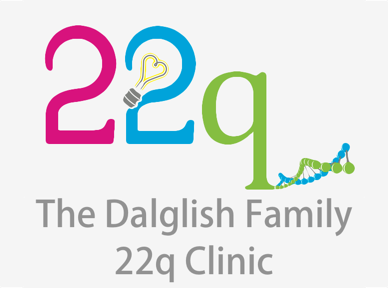Who should be screened for 22q11.2DS?
There are no hard and fast rules. Informed clinical judgement remains paramount. New knowledge is arising all the time.
General guidelines for testing using genome-wide methods for major structural variants that cause genomic disorders
Testing is recommended for all individuals with one or more of the following:
- Intellectual and developmental disabilities
- Any developmental delay, including a delay in gross motor, fine motor, learning, and/or speech & language
- Multiple congenital anomalies, especially of the heart or palate (velopharyngeal insufficiency)
Genome-wide methods will detect not only 22q11.2 deletions but also other pathogenic variants that may cause these major developmental conditions.
Newborn screening
Currently, in Ontario, 22q11.2 Deletion Syndrome is not one of the conditions routinely screened in newborn babies.
There is an active initiative to add 22q11.2 deletions to the conditions recommended for newborn screening by the US Department of Health and Human Services’ Advisory Committee on Heritable Disorders in Newborns and Children.
Screening criteria for individuals with schizophrenia
Source: 22q11 Deletion Syndrome: A Genetic Subtype of Schizophrenia
Anne S. Bassett, Eva W.C. Chow (1999) Biol Psychiatry. 46(7): 882–891.
A person with schizophrenia should be tested if he/she has two or more of the following features:
- Hypernasal speech, history of speech therapy, velopharyngeal incompetence, cleft palate (usually submucosal)
- Learning difficulties, history of special education, intellectual and developmental disabilities (borderline to mild)
- Congenital heart defect: e.g., ventricular septal defect, tetralogy of Fallot, interrupted aortic arch, transposition of the great vessels
- Any other significant congenital anomaly: e.g., talipes (club foot), polydactyly (extra finger or toe), kyphosis/scoliosis, renal anomaly, hypospadias
- Hypocalcemia (neonatal, childhood, adolescence or adult onset) and/or hypoparathyroidism
- History of athymia (absent thymus gland) or severe immune deficiency in infancy
Note: Clinic features of 22q11.2DS are variable. The above are features that are typical of 22q11.2DS. Specific features listed may not be present; others features may be identified in an individual with 22q11.2DS.
In the past, a certain set of facial features has been used in clinical screening for 22q11.2DS. However, these features are usually subtle and vary greatly, affected by age, ethnicity, and other factors. The lack of an easily recognizable pattern of features present in most adults with 22q11.2DS makes these less useful than other health-related features.
Screening criteria for adults with congenital heart disease
Source: Extracardiac features predicting 22q11.2 Deletion Syndrome in adult congenital heart disease.
Fung et al. (2008) Int J Cardiol. 131(1): 51–58.
An adult with:
- Congenital heart disease plus any of the following:
- Voice abnormalities
- History of learning or behavioural difficulties
- History of hypocalcaemia, and aged under 30 years
In the past, a certain set of facial features has been used in clinical screening for 22q11.2DS. However, these features are usually subtle and vary greatly, affected by age, ethnicity, and other factors. The lack of an easily recognizable pattern of features present in most adults with 22q11.2DS makes these less useful than other health-related features.
In fact, 1 in 3 individuals with interrupted aortic arch type B and 1 in 8 individuals with tetralogy of the Fallot are found to have 22q11.2 deletions. So most infants with these congenital heart diseases are now screened in infancy.
Screening individuals with velopharyngeal insufficiency
Other screening guidelines
A set of guidelines can be found in Table 5 of Defining new guidelines for screening the 22q11.2 deletion based on a clinical and dysmorphologic evaluation of 194 individuals and review of the literature, where the study population was composed of primarily children and teenagers. At this point, no comprehensive published guidelines are available for screening adults in general.
